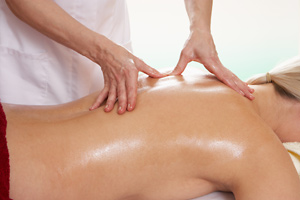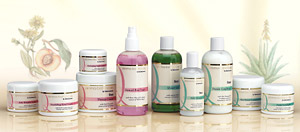Aroma Is A Full Body Experience
 It has long been acknowledged that the psychological effect of aromas is incredibly powerful, but until recently we didn’t realise just how great its influence can really be.
It has long been acknowledged that the psychological effect of aromas is incredibly powerful, but until recently we didn’t realise just how great its influence can really be.
A team of biologists at Ruhr University Bochum in Germany has found that aroma is actually a full body experience, since olfactory receptors have been found in skin cells all over the body!
Dr Hanns Hatt, lead researcher on the project, explained that more than 15 of the receptors that are known to exist in the nose can also be found in human skin cells known as keratinocytes. These are a major cell type of the epidermal layer, and the researchers identified a novel type of chemoreceptors in some keratinocytes which act as olfactory receptors.
It was also observed that exposing the olfactory receptors to the synthetic sandalwood odour known as Sandalore caused molecular signals to trigger those that are believed to induce healing in injured tissue. Indeed, in human tests it was observed that abrasions of the skin healed 30 per cent faster when Sandalore was present.
The findings are incredibly significant for aromatherapy and add further weight to the healing power of aromatic medicine. Olfactory receptors are capable of detecting compounds and not just those in the air. Consequently, when aromatherapy is used, the full body will absorb and process the aromas. This research also opens up the possibility that synthetic aroma compounds can work as healing agents.
However, experts claim that only certain aromas work, as olfactory receptors operate as a lock and key system. So when the right molecule is present, it unlocks the receptors and causes a series of biochemical reactions. Signals are then sent to the brain, which controls how we perceive aromas, if not how we physically respond to them.
Olfactory receptors are also present in the liver, heart, lungs, colon and brain. The applications for aromatherapy are widespread and it can treat both physical and emotional conditions.
There’s much research supporting the use of aromatherapy for managing stress. A study in the ACS’ Journal of Agricultural and Food Chemistry suggested that certain fragrances can alter gene activity and blood chemistry.
Scientists from Japan observed that the chemical constituent linalool lowered neutrophils and lymphocytes, which are elevated during stress. Linalool can be found in many popular essential oils used in aromatherapy to combat stress including bergamot, lavender, linaloe wood and petitgrain.
In the form of essential oils we use aroma to treat depression, ensure focus, and promote positivity, among many other mental wellbeing applications. Physically, essential oils are used to treat multiple issues, thanks to the antibacterial, antiseptic, antispasmodic, anti-inflammatory, and relaxant properties of many oils. Perhaps the research at Ruhr University has discovered yet another dimension as to how essential oils work to heal the body.
As the knowledge of how the body processes aromas increases, the use of aromatherapy in everyday life is only set to increase. Indeed, demand continues to increase as people look for natural ways to treat conditions and minimise the side effects of modern drugs.
The full report of this research can be found here.
Copyright © Quinessence Aromatherapy Ltd 2014. Written by Geoff Lyth






























